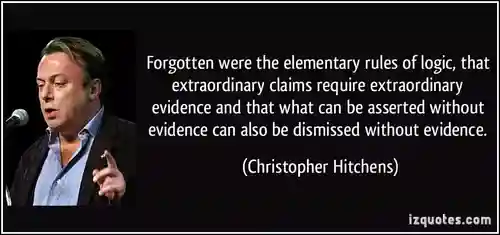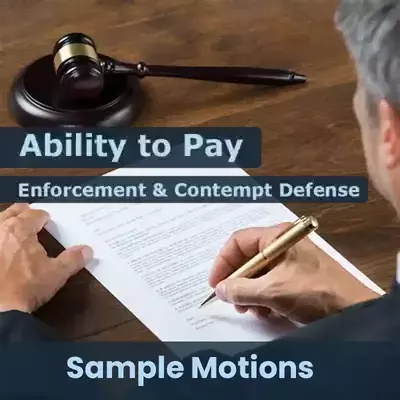Daily Tool: Evidence…Entering Evidence or Authenticating Evidence
CATEGORY: Family Law Procedure; pro se help

How to submit evidence in family court:
You’ve addressed some objections and now you want to make your case, but you just don't know how to get the evidence onto the record. There is nothing worse than being frustrated because you cannot use any of your evidence because you don't know the procedure for entering evidence. We hear this complaint all the time, "the judge wouldn't look at any of my evidence!" The reason the judge wouldn't look at the evidence is that the evidence wasn't properly before the judge and if the judge had looked at it, then his orders could be overturned on appeal.
Wouldn't you rather just know how to go about entering evidence or what the attorneys call authenticating evidence? Essentially, entering evidence requires that you introduce the evidence through testimony of some kind and there are certain things you must say about the evidence if you want to validly authenticate evidence. This is an example of how we help you get better results
The basic steps for entering evidence or authenticating evidence in your divorce and child custody case are as follows:
- 1. Establish the foundation of your exhibit.
- 2. Identify your exhibit.
- 3. Authenticate your exhibit.
- 4. Enter the exhibit into the record. (Don’t forget this step or you would have wasted your time!)
(Keep reading past this list for sample dialogue showing you how you might apply these steps in your case.)
Use Your Exhibit
Then you are ready to use your exhibit to prove your case. Only after you enter an exhibit can it be used as evidence. (Note that there is a difference between exhibit and evidence. Your exhibit doesn't become evidence until you have proven to the court that it can be used as evidence. Until then it is nothing more than an exhibit waiting for you to prove first that it is an exhibit that can be used.)
It's important that you have these steps down because the trial courts are supposed to apply laws and you are supposed to provide the court with the evidence they need to apply and enforce those laws.
In order for you to provide the court with what they need to justify deciding in your favor, you will have to give them what they need in order to make a decision in your favor. Most parents believe that this is proving to the court that the other parent has turned into a monster and that you are an angel in comparison or at the minimum the better choice.
Your evidence can be used to show a different story as well. Your evidence can help you show the court how you are exercising your rights and time with your children and to show the close relationship that you have with them. Rather than just stating to the court that you have fundamental parental rights protected by the supremacy of law, you need to demonstrate those rights.
If you plead your constitutional rights and then you present evidence of the traditional nature trying to prove that you are the better parent, then you have not supplied the court with evidence to support your pleading of wanting the court to protect your rights — that you are deciding best interest of your child and not asking the court to make that decision superior to you. If your evidence doesn't support your claims you have contradicted your argument with evidence that says you want the court to prove who is better.
If you want the court to see how you exercise your rights each time you have your children, you're going to want to bring pictures of projects or activities, books you read to them and examples from each of these activities, projects, and books on how you share your values or principles with them.
Bringing all of this stuff won't matter though if you don’t know how to get the evidence accepted by the court onto the record.
Get Evidence Entered
So how would you get a letter, an e-mail, a book, or a picture onto the record?
Submit to Court Reporter
First you are going to want to get the exhibit marked by the court reporter. Hopefully, you found out in advance how to label the evidence. (Each court has a specific label they want you to use, some courts want you to label like: Petitioner Exhibit 1A or Respondent 1A depending on which one you are so they can keep track easier.) Either way, you still have to ask permission to show the exhibit to the court reporter and have the reporter mark the exhibit or note the exhibit name.
Dialog
Here is sample dialogue to help you get an idea of how to do this: (I'm using a letter as an example.)
So you may start something like this:
“Your honor may I have the court reporter mark this exhibit?”
Then you show your exhibit to the opposing counsel and state:
“Please let the record reflect that I am showing plaintiff’s exhibit # to opposing counsel.”
Then you request permission to approach the witness and show them the exhibit.
“May I approach the witness Your Honor?”
Once the judge has granted you permission to approach the witness then you can approach and hand the exhibit to the witness to examine.
Now you are going to start to lay your foundation. (Laying the foundation is not reading or describing the contents of the exhibit yet. You are proven what the exhibit is and that it is authentic and original, not proving what the exhibit proves in your case yet.)
“Ms. Doe, I am handing you plaintiff’s exhibit # 1 for identification. Would you please tell me what it is?
“Do you recognize the person’s name on the letter?”
“What is the name on the letter?”
“How did you receive this letter?”
“What is the date on this letter?”
And you may ask some other questions to prove that the letter is authentic and an original. (See the Best Evidence argument below under the Not Best Evidence objection.)
After you have firmly established the foundation of your exhibit, you would state the following to the Court:
“Your Honor, we offer plaintiff’s exhibit 1 to be entered into evidence.”
Then the judge will tell you whether it is accepted as an exhibit and entered. Being accepted does not mean that you have proven anything yet. If it is entered then you can now proceed with using the exhibit to prove an issue you are there to prove. If the other side objects to the exhibit being entered, you'll want to be prepared with defenses to those objections. This is why it is good to get a basic list of objections and responses you can make to defend against the objection in advance as well. Just some basic ones will get you through the majority of the cases.
Then, and only after you have entered the evidence onto the record, do you have your witness (you are the witness if you are testifying) read from the exhibit or describe the details of the exhibit and talk about it to demonstrate the issue you are trying to prove. But only after the judge says that your exhibit has been accepted into the record.
You would do this with each piece of evidence, pictures, e-mails, books, etc.
You will want to know the Best Evidence rule and also the rule about when something has to be an original. E-mails are generally accepted as originals because they reside on the computer so what you print is from the original.
You may be able to enter a grouping of items and not have to do this with every single one individually by having let’s say a stack of pictures and requesting that all of them are authenticated at the same time. And don’t forget to always, always, ask for the exhibit to be entered into the record. If you forget to do this your evidence is not entered and you may be barred from using it later.
You should get the hang of this pretty quickly if you just remember that you are identifying the foundation or the chain of evidence as is sometimes called in criminal cases when something passed through the hands of many people and you want to prove that it is still the original or wasn’t tampered with.
So just remember that you are establishing the foundation, identifying the exhibit, authenticating it, and then asking for it to be entered onto the evidence. Then you can describe the details, read it, etc., and explain how it is relevant to your case after that.
Objections to Know
This is a good time to remind you about a couple of objections that get used with evidence:
HEARSAY:This is a challenge that the evidence being offered is an out of court statement being offered as proof of the statement. This is also a rule because the person cannot cross-examine a person that is not there to respond. There are many exceptions to the hearsay rule, so be familiar with hearsay.
NOT BEST EVIDENCE:Here they are challenging whether it is an original or that it is not authenticated. If an original is available you must use it. If not, then you make the best evidence argument. You would argue that it is the best evidence available.
NOT BEING USED TO PROVE THE TRUTH OF THE MATTER ASSERTED:They are challenging the relevance of your evidence for proving your case. Or they are claiming it is hearsay.
PREDICATE NOT ESTABLISHED:They are saying that you have not established the what, why, and how related to the piece of evidence. "The defense may make a big deal about who took the photo or how clear the picture is, but all of that goes to the weight of the evidence, not whether it comes in."**
Be prepared for all of the general objections. You can argue with the objection as long as you have a valid reason why your evidence does meet the standards of evidence outlined in your state rules of evidence.
Some cases are won simply because one side was able to block the evidence out of the trial and prevent the other side from proving or demonstrating anything. It's sort of like a pitcher winning a baseball game because he didn't allow any hits. If you do not present the evidence on the record properly a court is not supposed to be able to consider the evidence as proof of any matter.
And while the appellate court does not review evidence for its value in the matter, it will check the record to see if the judge’s determination had enough evidence to support it. So if you do win the other side might challenge you and make a case that the evidence doesn't support the ruling.
If you want to protect the ruling you might get in your favor then you’ll want the evidence in there to prevent the appellate court from overturning the decision. Testimony is also evidence by the way.
If you want to preserve your ability to challenge a decision made based on error of law, abuse of discretion, etc., you’ll also want the evidence in there to prove your issue. While they do not review evidence or how the judge used the evidence, they can and usually do review it to find proof to support your claims.
Evidence preparation
You will need 4 copies of every piece of evidence. One for the judge, One for opposing counsel, one for yourself, and one to show the witness. Get large three ring binders and lots of the plastic paper inserts for the binder. Place all copies of each exhibit in a single insert.


create a clear typed large text cover page for each exhibit that will help you find the right evidence quickly and reliably. Make sure this is the top page in the insert so that you see the cover page for each piece of evidence as you thumb through the binder. If you have more than one binder, make sure you have a cover page to go inside the front cover of the binder to identify the binder.
We hope this gets you started with entering evidence onto the record.
Keep coming back to this blog for other solutions and tools posted daily, as we help you explore your options and make your decisions easier to make on what is right for you and your family.
Take Care and see you back here tomorrow!
Read our book for citations of specific cases that you can use in your arguments to the court when you are arguing for the proper protection of your family rights.
[CLICK HERE to get the Parental Rights book “NOT in The Child’s Best Interest.]
You can learn more about this and how to reason through your rights and protect your rights in our booksand courses. Click at the top on Store and you will find the booksand trainingtabs. The book teaches you your rights and the training courses teach you how to argue them like I demonstrated above.]
Be sure to subscribe to our website and receive notices when the new Daily Tool is posted each day. Subscribe here:
SUBSCRIBE
NEW Family Rights Wiki pages with more tools and information here:
http://wiki.fixfamilycourts.com/
*We are not telling you to disturb the peace. This paragraph is a quote from the movie “Selma” 2014.
Strategic Parental Rights Strategist, Instructor, Constitutional Scholar, and Author
Divorce Solutions and Child Custody Solutions
Co-author “Not in the Child’s Best Interest” (Book on parental rights and children’s rights)
Co-author “Protecting Parent-Child Bonds: 28thAmendment” (Book includes guide for legislators)
**http://www.tdcaa.com/journal/evidence-101
Website: www.fixfamilycourts.com
Twitter: https://twitter.com/fixfamilycourts (@fixfamilycourts)
Facebook: https://www.facebook.com/pages/Fix-Family-Courts/324146134354536
YouTube: https://www.youtube.com/channel/UC_kKO3Xc_UT7ZeNU6OkYK0g



























